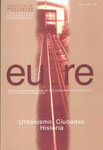Public Housing and Urban Space in Santiago de Chile. A restrospective View to the State Action in the First Decades of the 20th Century
DOI:
https://doi.org/10.4067/S0250-71612002008300006Keywords:
urban management, urban history, urbanization, housingAbstract
Chilean public housing begins in the last decade of the 19th century, when initiatives that tried to solve the problem of popular housing arose from philantrophy and catholic charity. The State gave an important step by promulgating the Workers Housing Law in 1906, which became the first law trying to approach that situation in an integral way. The Cheap Rooms Law and the Renting Law of 1925 are a consequence of the application of the 1906 legislation, as well as the social and political processes that Chile experienced during the first decades of the 20th Century. The territorial aspects that shaped those initiatives are analyzed, considering the localization of the main neighborhoods built around those actions in the city of Santiago, and the respective social and political debate accompanying this process.Metrics
Downloads
Published
How to Cite
Issue
Section
License
Copyright (c) 2002 Revista EURE - Revista de Estudios Urbano Regionales

This work is licensed under a Creative Commons Attribution 4.0 International License.
Al momento de aceptar la publicación de sus artículos, los autores deberán formalizar la cesión de derechos de autor a EURE, según las condiciones establecidas por la Revista.
Ésta establece que el autor autoriza a EURE de manera gratuita, exclusiva e ilimitada a reproducir, editar, publicar, distribuir, publicitar, comercializar y traducir el artículo, a cualquier soporte conocido o por conocer y desarrollar.
Del mismo modo, los autores aseguran que el artículo propuesto es original, no publicado y no propuesto para tal fin a otro medio de difusión.


